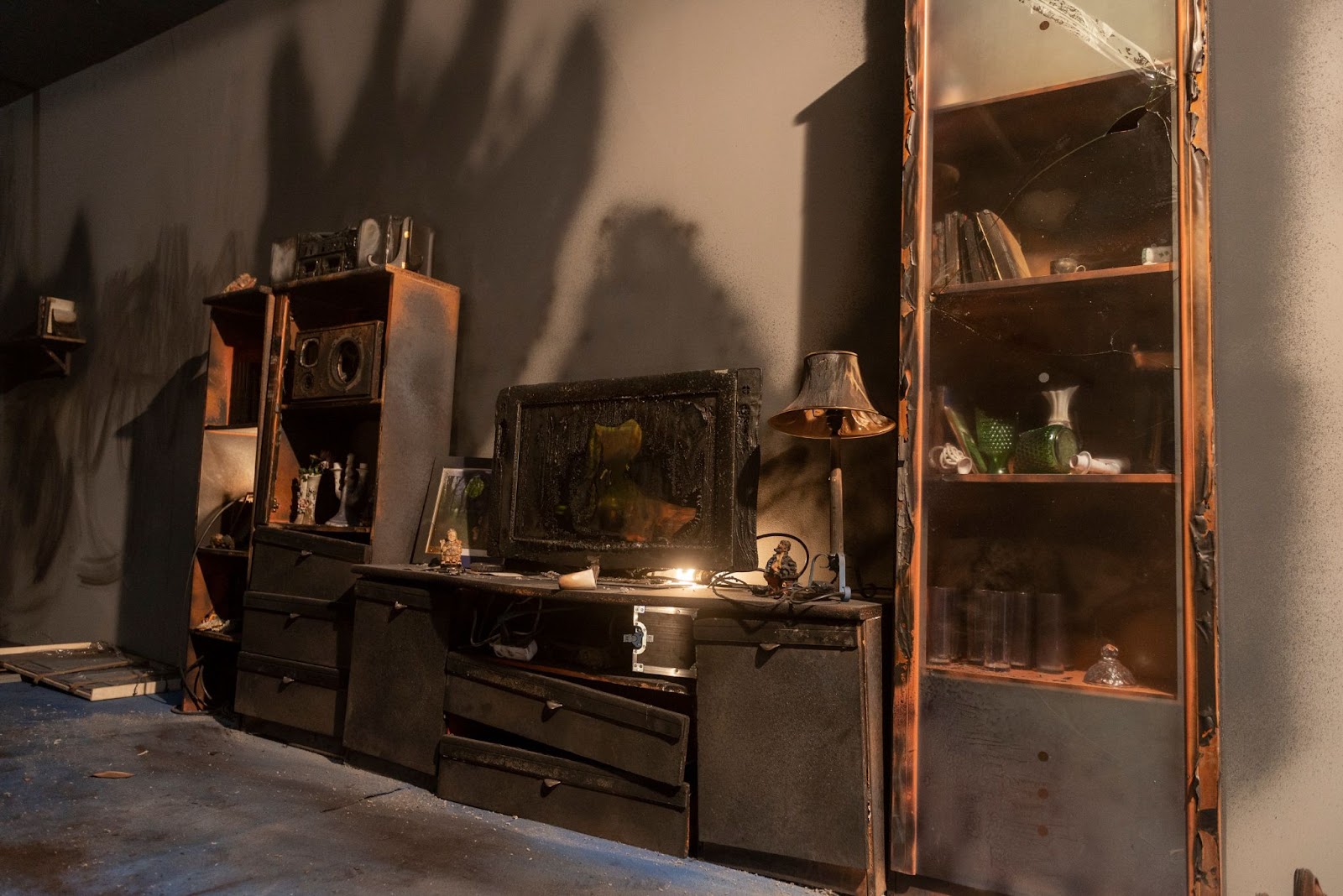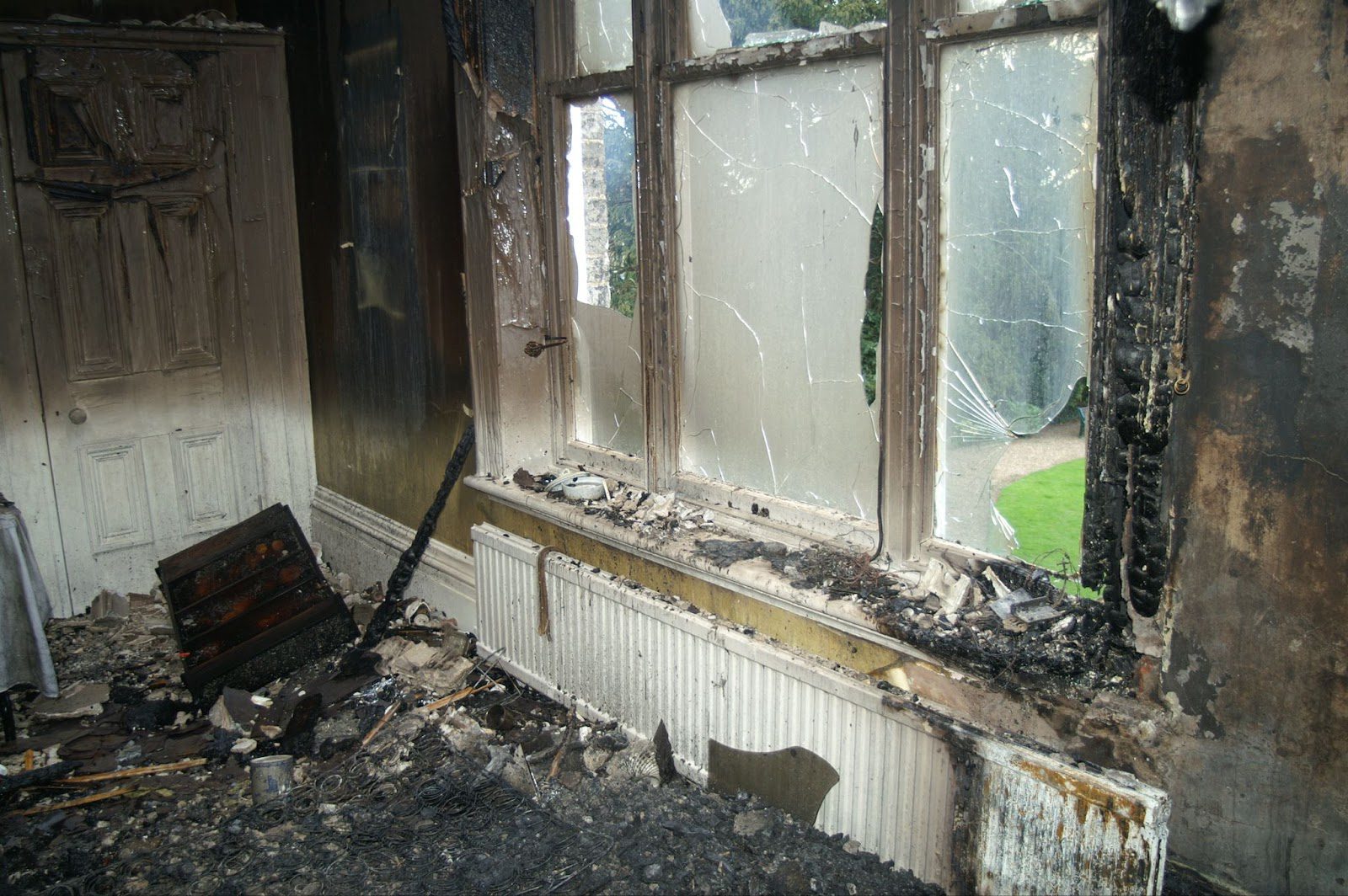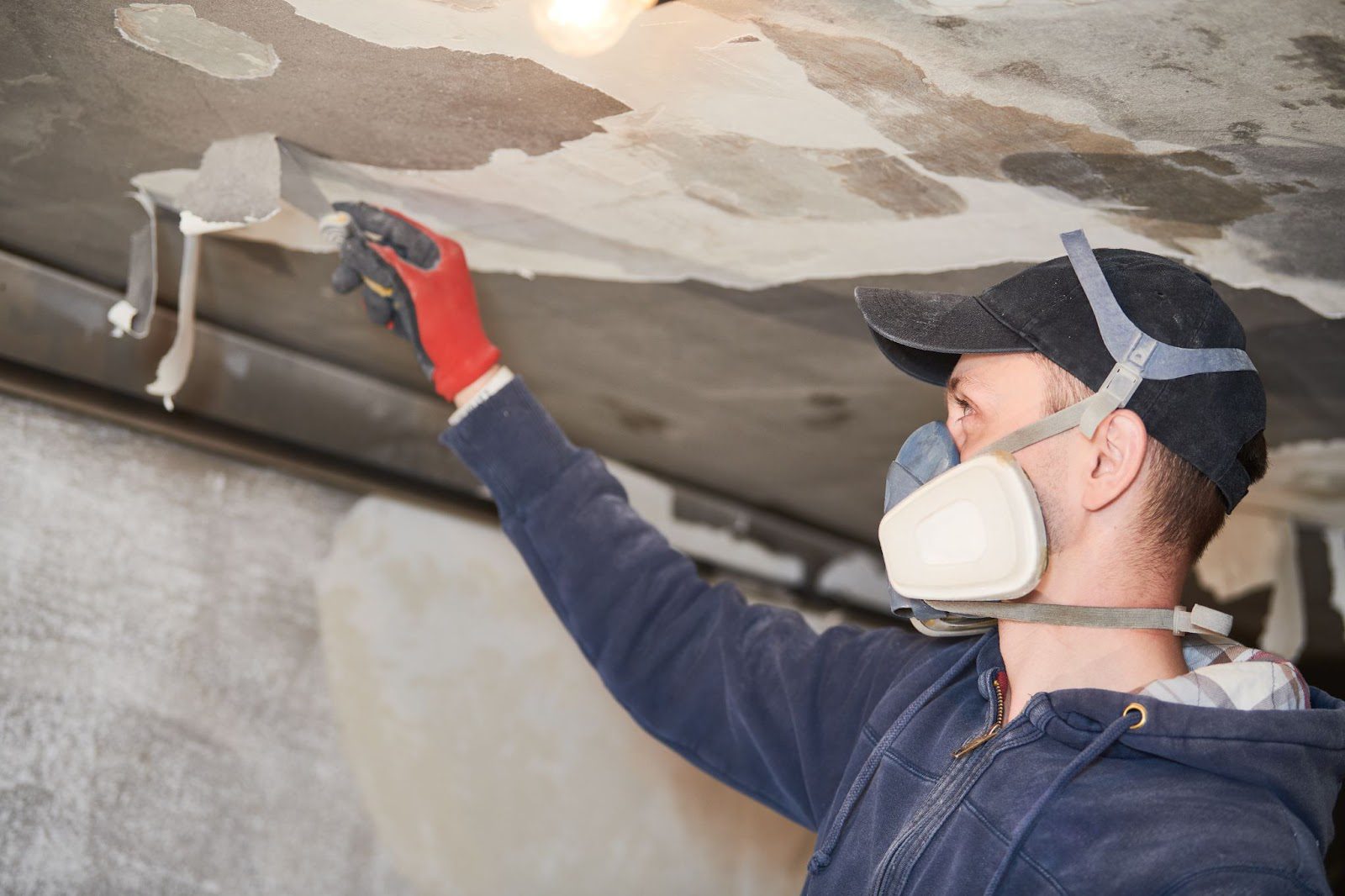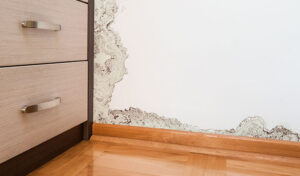Smoke damage wreaks havoc on your property, leaving stubborn odors, stains, and hazardous residues. The aftermath of a fire is far-reaching, affecting every corner of your home. Smoke penetrates walls, carpets, and furniture, embedding deep into materials and creating pervasive problems that are difficult to eradicate.
This insidious infiltration potentially leads to structural damage and health risks from lingering toxins. Whether the smoke damage results from a minor kitchen fire or a major blaze, it compromises the integrity and safety of your home.
The visible effects are just the tip of the iceberg. Soot and ash cover surfaces, tarnish metals, and discolor paint. More alarmingly, the microscopic particles embed themselves in your home’s HVAC system, spreading contaminants throughout your living spaces. The resulting odor and poor air quality make living conditions unbearable and unhealthy.
Importance of addressing smoke damage promptly
Addressing smoke damage quickly is crucial. Lingering smoke residues and odors become harder to remove over time. Delaying action exacerbates structural damage and increases health risks.
Smoke particles contain toxic chemicals that cause respiratory issues, skin irritation, and long-term health problems. Immediate attention prevents further deterioration, preserves property value, and safeguards health.
Causes of smoke damage
Residential fires
Even small residential fires produce a surprising amount of smoke, infiltrating every corner of your home. Damage extends beyond visible burn marks, affecting walls, ceilings, furniture, and personal belongings. Lingering smoke and soot make a home uninhabitable until properly addressed.
Wildfires
Wildfires devastate communities, leaving extensive smoke damage. Smoke travels miles, infiltrating homes even if flames don’t reach them. The pervasive residue coats surfaces, embeds fabrics, and creates a toxic environment.
Electrical malfunctions
Electrical malfunctions, such as short circuits and faulty wiring, spark fires, causing significant smoke damage. These incidents produce dense smoke that quickly spreads throughout the property, releasing toxic fumes from burning plastics and other synthetic materials.
Cooking incidents
Grease fires, unattended stovetops, and oven mishaps generate substantial smoke that can overwhelm a kitchen and adjacent rooms. The smoke leaves behind greasy residues and strong odors that permeate cabinets, walls, and upholstery. Immediate cleanup is essential to mitigate damage.
Types of smoke residue
Dry smoke
Dry smoke results from fast-burning, high-temperature fires, leaving a powdery residue that easily settles on surfaces. This residue spreads quickly and infiltrates tiny crevices, requiring thorough attention to prevent lingering odors and health risks.
Wet smoke
Wet smoke comes from slow-burning, low-heat fires, clinging to surfaces with a thick, greasy residue. Often from smoldering fires involving rubber or plastic, its pungent odor, and challenging cleanup require specialized techniques and persistent efforts.
Protein residue
Protein residue emerges from kitchen fires involving meat or other organic materials, leaving a nearly invisible film that coats surfaces. This residue has a strong odor that permeates walls, cabinets, and furniture, requiring meticulous cleaning to eradicate.
Fuel oil soot
Fuel oil soot occurs from furnace puff backs, covering an area with a fine, oily film. This sticky residue stains surfaces permanently if not addressed promptly, requiring comprehensive and often professional remediation.
Health risks associated with smoke damage
Respiratory issues
Inhaling smoke particles irritates the respiratory tract, leading to coughing, wheezing, and shortness of breath. These particles can penetrate deep into the lungs, causing bronchitis, asthma, and other chronic conditions.
Skin and eye irritation
Exposure to smoke residue causes skin and eye irritation. Fine particles and chemical compounds in smoke settle on surfaces, transferring to the skin and causing rashes, itching, and dryness. Smoke particles also irritate eyes, causing redness, burning, and tearing.
Long-term health effects
Prolonged exposure to smoke particles increases the risk of respiratory diseases like COPD and lung cancer. Toxic substances in smoke, such as formaldehyde and benzene, pose significant health threats. Exposure can impact cardiovascular health, increasing the risk of heart disease and stroke.
Immediate steps to take after smoke damage
Ensuring safety and evacuation
Ensure everyone’s safety by evacuating immediately and staying out until authorities declare the area safe. Avoid re-entering the premises without proper protection due to serious health risks from smoke inhalation.
Contacting professionals for assessment
Contact restoration professionals for a thorough assessment. Experts quickly evaluate the damage, identifying visible and hidden issues. Their prompt response sets the stage for effective mitigation and cleanup.
Documenting the damage
Document the damage with detailed photographs and videos of affected areas, including walls, ceilings, furniture, and personal belongings. This documentation is crucial for insurance claims and helps restoration teams understand the full scope of the damage.
Assessing the extent of smoke damage
Visible vs. hidden damage
Visible damage includes soot-covered walls, stained ceilings, and charred belongings. Smoke often penetrates deeper, causing hidden damage in walls, insulation, and air ducts. Ignoring hidden issues leads to long-term problems and health risks.
Importance of professional assessment
A professional assessment uncovers both visible and hidden damage. Experts identify all affected areas, ensuring nothing is overlooked. They pinpoint structural issues, air quality concerns, and other smoke-related problems.
Tools and techniques used in assessment
Professionals use advanced tools like moisture meters, infrared cameras, and air quality monitors to assess smoke damage accurately. Combined with expert knowledge, these tools ensure thorough evaluation and effective restoration.
Cleaning and restoration process
Removing soot and residue
Professionals use specialized vacuums and powerful brushes to lift soot from surfaces without causing further damage. High-efficiency particulate air (HEPA) vacuums capture fine particles, ensuring the environment remains safe and clean. These vacuums are equipped with filters that trap tiny particles, preventing them from being released back into the air.
Brushes with soft bristles gently remove soot from delicate surfaces, avoiding scratches and further damage. The meticulous process ensures that every inch of the affected area is thoroughly cleaned, eliminating the harmful residue that can cause respiratory issues and further property damage.
Odor removal techniques
Eliminating the pervasive smell of smoke requires advanced odor removal techniques. Thermal fogging involves dispersing deodorizing chemicals through a heated fog, which penetrates deeply into porous materials like fabrics, upholstery, and wood. This method neutralizes smoke odors at the molecular level, ensuring a fresh, clean scent throughout your home.
Ozone treatments use ozone generators to oxidize and remove stubborn smells embedded in walls, carpets, and furniture. Ozone, a powerful oxidizing agent, breaks down odor-causing molecules, leaving the air clean and breathable. These techniques are highly effective, ensuring that no trace of the smoke odor remains, providing a comfortable living environment.
Cleaning different surfaces (walls, carpets, furniture)
Different surfaces require unique cleaning approaches to ensure thorough restoration. For walls, professionals use dry cleaning sponges and chemical cleaners to remove soot without damaging paint or wallpaper. These sponges effectively lift soot and dirt, while chemical cleaners break down any remaining residue.
Carpets and upholstery are treated with steam cleaning and specialized detergents to extract soot and smoke particles deeply embedded in fibers. Steam cleaning uses hot water extraction to reach deep into the carpet pile, removing contaminants and leaving carpets clean and fresh.
For upholstery, gentle yet effective detergents ensure that fabrics are thoroughly cleaned without damage.
Hard furniture surfaces undergo thorough scrubbing and polishing to restore their original appearance. Professionals use appropriate cleaning agents for wood, metal, and plastic surfaces, ensuring each piece is perfectly cleaned and polished. This process removes any smoke residue and restores the furniture’s shine and luster.
By addressing each surface with tailored cleaning methods, professionals ensure complete restoration, eliminating any residue or odor and returning your home to its pre-damage condition.
Preventing future smoke damage
Installing smoke detectors
Place smoke detectors in every bedroom, outside sleeping areas, and on each level of your home. Test them monthly and replace batteries annually. Consider interconnected smoke alarms that trigger all units simultaneously.
Regular maintenance of electrical systems
Schedule annual inspections with a licensed electrician to identify and repair potential hazards. Replace old wiring and avoid overloading circuits. Upgrade your electrical panel if necessary to handle modern demands safely.
Safe cooking practices
Never leave cooking unattended, especially with high heat. Keep flammable items away from the stove and regularly clean your oven and stove top to prevent grease buildup. Install a fire extinguisher in the kitchen and know how to use it.
Working with insurance for smoke damage claims
Understanding your policy
Review your insurance policy to understand coverage details, limitations, and exclusions. Familiarize yourself with the claims process, deductibles, and required documentation.
Documenting and reporting damage
Take detailed photographs and videos of all affected areas and items. Note the extent of the damage, including soot, stains, and structural issues. Promptly report the damage to your insurance company, providing all documentation to support your claim.
Navigating the claims process
Contact your insurance agent to initiate the claim and follow their guidance. Be prepared to meet with an adjuster who will assess the damage and determine the payout. Stay organized by keeping all correspondence and documentation in one place.
Benefits of professional smoke damage restoration
Expertise and equipment
Professionals bring unmatched expertise and specialized equipment to the table. They use industrial-grade equipment like HEPA vacuums, thermal foggers, and ozone generators to remove soot, neutralize odors, and restore air quality.
Comprehensive cleaning and restoration
Professionals provide meticulous cleaning of all surfaces, repair structural damage, repaint walls, and restore your home to its pre-damage condition. Their all-encompassing approach ensures thorough cleaning and full restoration.
Peace of mind
Hiring professionals for smoke damage restoration alleviates the stress and anxiety of dealing with smoke damage. Their thorough work ensures your home is safe, clean, and free of harmful residues, allowing you to return to normal life confidently.
Total Flood and Fire Restoration
Smoke damage poses serious threats to both property and health. Addressing it promptly and effectively is essential to restore your home and ensure safety. From understanding the causes and types of smoke damage to taking immediate action and working with insurance, navigating the aftermath of a fire requires knowledge and expertise.
Total Flood and Fire Restoration provides the expertise, advanced equipment, and comprehensive services needed to tackle even the most severe smoke damage. Our team of trained professionals ensures thorough cleaning, effective odor removal, and meticulous restoration, giving you peace of mind throughout the process.
Contact Total Flood and Fire Restoration today for expert assistance and experience the benefits of professional smoke damage restoration.









